
The Nebraska Publications Clearinghouse receives documents every month from all Nebraska state agencies, including the University of Nebraska Press (UNP). Each month we will be showcasing the UNP books that the Clearinghouse receives. UNP books, as well as all Nebraska state documents, are available for checkout by libraries and librarians for their patrons.
Here are the UNP books the Clearinghouse received in September and October 2020:

Anything Will Be Easy After This : A Western Identity Crisis Bethany Maile (Series: American Lives)
Bethany Maile had a mythological American West in mind when she returned to Idaho after dropping out of college in Boston, only to find a farm-town-turned-suburb instead of the Wild West wonderland she remembered. Haunted by what she had so completely misremembered, Maile resolved to investigate her attachment to the western myth, however flawed.
Deciding to engage in a variety of “western” events, Maile trailed rodeo queens, bid on cattle, fired .22s at the gun range, and searched out wild horses. With lively reportage and a sharp wit, she recounts her efforts to understand how the western myth is outdated yet persistent while ultimately exploring the need for story and the risks inherent to that need. Anything Will Be Easy after This traces Maile’s evolution from a girl suckered by a busted-down story to a more knowing woman who discovers a new narrative that enchants without deluding.
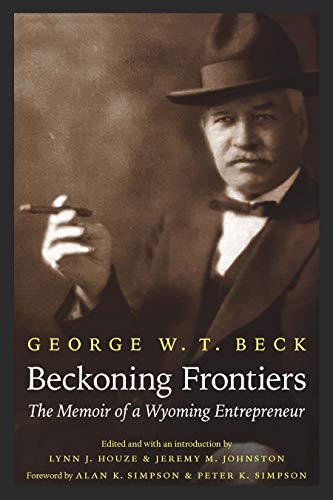
Beckoning Frontiers : The Memoir of a Wyoming Entrepreneur George W. T. Beck, Edited and with an introduction by Lynn J. Houze and Jeremy M. Johnston (Series: The Papers of William F. “Buffalo Bill” Cody)
George W. T. Beck, an influential rancher and entrepreneur in the American West, collaborated with William F. “Buffalo Bill” Cody to establish the town of Cody, Wyoming, in the 1890s. He advanced his financial investments in Wyoming through his numerous personal and professional contacts with various eastern investors and politicians in Washington DC. Beck’s family—his father a Kentucky senator and his mother a grandniece of George Washington—and his adventures in the American West resulted in personal associates who ranged from western legends Buffalo Bill, Jesse James, and Calamity Jane to wealthy American elites such as George and Phoebe Hearst and Theodore Roosevelt.
This definitive edition of Beck’s memoir provides a glimpse of early life in Wyoming, offering readers a rare perspective on how community boosters cooperated with political leaders and wealthy financiers. Beck’s memoir, introduced and annotated by Lynn J. Houze and Jeremy M. Johnston, offers a unique and sometimes amusing view of financial dealings in eastern boardrooms, as well as stories of Beck’s adventures with Buffalo Bill in Wyoming. Beck’s memoir demonstrates not only his interest in developing the West but also his humor and his willingness to collaborate with a variety of people.

Foxlogic, Fireweed Jennifer K. Sweeney (Series: The Backwaters Prize in Poetry)
Winner of the Backwaters Prize in Poetry, Jennifer K. Sweeney’s Foxlogic, Fireweed follows a lyrical sequence of five physical and emotional terrains—floodplain, coast, desert, suburbia, and mesa—braiding themes of nature, domesticity, isolation, and human relationships. These are poems of the earth’s wild heart, its searing mysteries, its hollows, and its species, poems of the complex domestic space, of before and after motherhood, gun terror, the election, of dislocation and home, and of how we circle toward and away from our centers. Sweeney is not afraid to take up the domestic and inner lives of women, a nuanced relationship with the natural world that feels female or even maternal, or a duty to keeping alive poetry’s big questions of transcendence, revelation, awe, and deep presence in the ordinary.
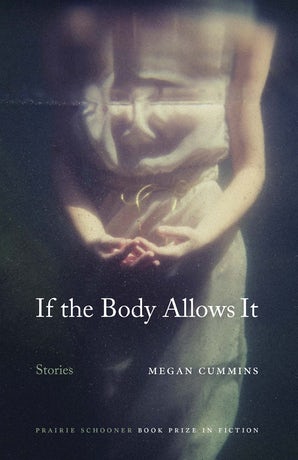
If the Body Allows It Megan Cummins (Series: Prairie Schooner Book Prize in Fiction
Winner of the Prairie Schooner Book Prize in Fiction, If the Body Allows It is divided into six parts and framed by the story of Marie, a woman in her thirties living in Newark, New Jersey. Suffering from a chronic autoimmune illness, she also struggles with guilt over the overdose and death of her father, whom she feels she betrayed at the end of his life. The stories within the frame—about failed marriages, places of isolation and protection, teenage mistakes, and forging a life in the aftermath—are the stories the narrator writes after she meets and falls in love with a man whose grief mirrors her own. If the Body Allows It explores illness and its aftermath, guilt and addiction, and the relationships the characters form after they’ve lost everyone else, including themselves.
Introspective, devastating, and funny, If the Body Allows It grapples with the idea that life is always on the brink of never being the same again.
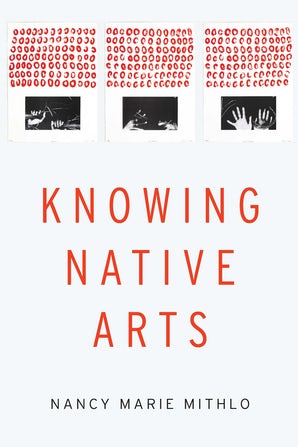
Knowing Native Arts Nancy Marie Mithlo
Knowing Native Arts brings Nancy Marie Mithlo’s Native insider perspective to understanding the significance of Indigenous arts in national and global milieus. These musings, written from the perspective of a senior academic and curator traversing a dynamic and at turns fraught era of Native self-determination, are a critical appraisal of a system that is often broken for Native peoples seeking equity in the arts.
Mithlo addresses crucial issues, such as the professionalization of Native arts scholarship, disparities in philanthropy and training, ethnic fraud, and the receptive scope of Native arts in new global and digital realms. This contribution to the field of fine arts broadens the scope of discussions and offers insights that are often excluded from contemporary appraisals.
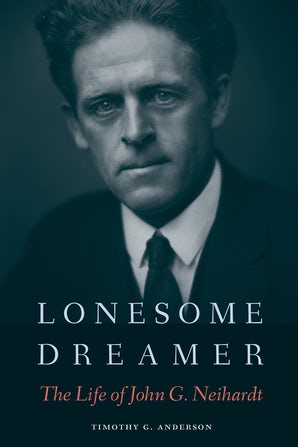
Lonesome Dreamer : the Life of John G. Neihardt Timothy G. Anderson
American poet and writer John G. Neihardt (1881–1973) possessed an inquiring and spiritual mind. Those qualities came to the fore in Black Elk Speaks, the story of the Lakota holy man Black Elk, for which he is best remembered. Over the course of thirty years he also wrote a five-volume epic poem, A Cycle of the West, which told the story of the settling of the American West.
Despite Neihardt’s widespread name recognition, the success of Black Elk Speaks, and a list of critically acclaimed books and poems, Lonesome Dreamer is the first biography of Neihardt in nearly forty years. Timothy G. Anderson describes Neihardt’s life from his humble beginnings in Illinois, to being named poet laureate of Nebraska in 1921, to his appearance on the Dick Cavett Show at the age of ninety. Anderson also delves into Neihardt’s success as a poet far from the East Coast literary establishment, his resistance to modernist movements in poetry, and his wish to understand and describe the experience of the Plains Indians. Offering insight into both his personal and his literary life, this biography reaffirms Neihardt’s place in American literary history, his successes and failures, and his unbreakable spirit.
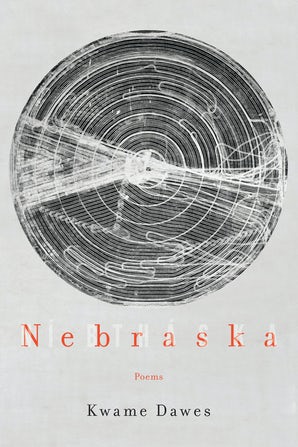
Nebraska : Poems Kwame Dawes
Kwame Dawes is not a native Nebraskan. Born in Ghana, he later moved to Jamaica, where he spent most of his childhood and early adulthood. In 1992 he relocated to the United States and eventually found himself an American living in Lincoln, Nebraska.
In Nebraska, this beautiful and evocative collection of poems, Dawes explores a theme constant in his work—the intersection of memory, home, and artistic invention. The poems, set against the backdrop of Nebraska’s discrete cycle of seasons, are meditative even as they search for a sense of place in a new landscape. While he shovels snow or walks in the bitter cold to his car, he is engulfed with memories of Kingston, yet when he travels, he finds himself longing for the open space of the plains and the first snowfall. With a strong sense of place and haunting memories, Dawes grapples with life in Nebraska as a transplant.
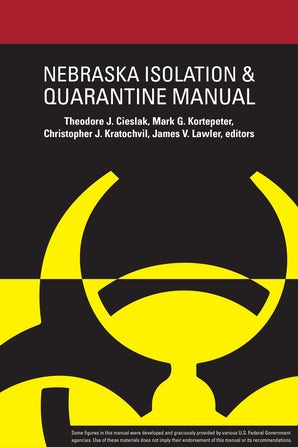
Nebraska Isolation & Quarantine Manual Edited by Theodore J. Cieslak, Mark G. Kortepeter, Christopher J. Kratochvil, and James V. Lawler
The University of Nebraska Medical Center has gained international recognition for its expertise in the control and management of highly infectious diseases, with a good deal of public attention given to its work during the 2014 Ebola outbreak in west Africa and now in 2020 with its biocontainment and treatment of more than a dozen cruise ship evacuees who were exposed to the coronavirus. The Nebraska Isolation and Quarantine Manual is a practical guide for local public health officials, emergency management personnel, and health care providers looking to implement evidence-based best practices in the event of an infectious disease outbreak.
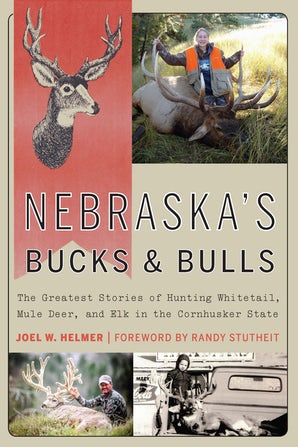
Nebraska’s Bucks & Bulls : the Greatest Stories of Hunting Whitetail, Mule Deer, and Elk in the Cornhusker State Joel W. Helmer
Eclipsing Memorial Stadium on a Husker football game day, deer season is arguably the largest single sporting event of the year in Nebraska, with more than one hundred thousand hunters going afield with the hopes of tagging a trophy buck or bull.
Nebraska’s Bucks and Bulls tells the stories and shares the photographs of the greatest whitetail, mule deer, and elk shot in Nebraska. Collected through firsthand interviews with the hunters, these personal hunting stories span the decades from the mid-1940s through the 2010s. Each story shares the excitement and adventure of the hunt while weaving in Nebraska history, ecology, and geography. Photographs of the trophy animals showcase not only the quality and variety of big-game hunting in Nebraska but also the changes in hunting clothes, gear, guns, and vehicles through the state’s history.
Recounted by Joel W. Helmer, an avid hunter and official measurer for the Boone and Crockett Club, which created the scoring system for measuring North American big-game animals, each chapter tells the story of a buck or bull certified through official state or national records books. Nebraska’s Bucks and Bulls has finally gathered the state’s greatest hunting tales in one place.
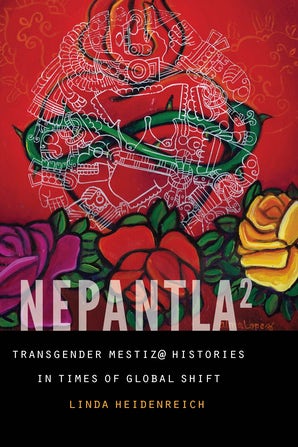
Nepantla Squared : Transgender Mestiz@ Histories in Times of Global Shift Linda Heidenreich (Series: Expanding Frontiers: Interdisciplinary Approaches to Studies of Women, Gender, and Sexuality)
Nepantla Squared maps the lives of two transgender mestiz@s, one during the turn of the twentieth century and one during the turn of the twenty-first century, to chart the ways race, gender, sex, ethnicity, and capital function differently in different times. To address the erasure of transgender mestiz@ realities from history, Linda Heidenreich employs an intersectional analysis that critiques monopoly and global capitalism. Heidenreich builds on the work of Gloria Anzaldúa’s concept of nepantleras, those who could live between and embody more than one culture, to coin the term nepantla², marking times of capitalist transition where gender was also in motion. Transgender mestiz@s, too, embodied that movement.
Heidenreich insists on a careful examination of the multiple in-between spaces that construct lives between cultures and genders during in-between times of shifting empire and capital. In so doing, they offer an important discussion of race, class, nation, and citizenship centered on transgender bodies of color that challenges readers to rethink the way they understand the gendered social and economic challenges of today.

Sky Songs : Meditations on Loving a Broken World Jennifer Sinor (Series: American Lives)
Sky Songs is a collection of essays that takes inspiration from the ancient seabed in which Jennifer Sinor lives, an elemental landscape that reminds her that our lives are shaped by all that has passed through. Beginning with the conception of her first son, which coincided with the tragic death of her uncle on an Alaskan river, and ending a decade later in the Himalayan home of the Dalai Lama, Sinor offers a lyric exploration of language, love, and the promise inherent in the stories we tell: to remember.
In these essays, Sinor takes us through the mountains, deserts, and rivers of the West and along with her on her travels to India. Whether rooted in the dailiness of raising children or practicing yoga, Sinor searches for the places where grace resides. The essays often weave several narrative threads together in the search for relationship and connection. A mother, writer, teacher, and yoga instructor, Sinor ultimately tackles the most difficult question: how to live in a broken world filled with both suffering and grace.
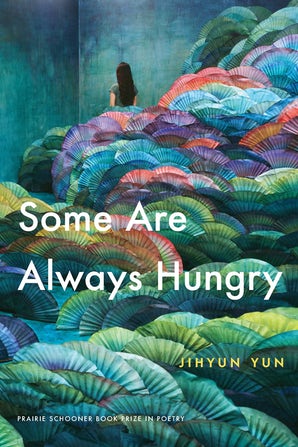
Some Are Always Hungry Jihyun Yun (Series: Prairie Schooner Book Prize in Poetry)
Winner of the Prairie Schooner Book Prize in Poetry, Some Are Always Hungry chronicles a family’s wartime survival, immigration, and heirloom trauma through the lens of food, or the lack thereof. Through the vehicle of recipe, butchery, and dinner table poems, the collection negotiates the myriad ways diasporic communities comfort and name themselves in other nations, as well as the ways cuisine is inextricably linked to occupation, transmission, and survival. Dwelling on the personal as much as the historical, Some Are Always Hungry traces the lineage of the speaker’s place in history and diaspora through mythmaking and cooking, which is to say, conjuring.
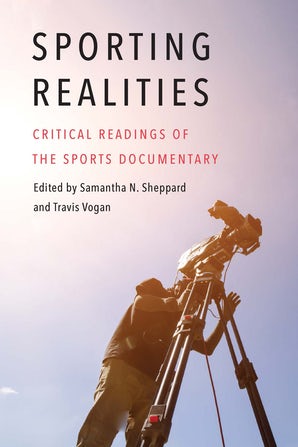
Sporting Realitites : Critical Readings of the Sports Documentary Edited by Samantha N. Sheppard and Travis Vogan (Series: Sports, Media, and Society)
Despite the increasing number of popular and celebrated sports documentaries in contemporary culture, such as ESPN’s 30 for 30 series, there has been little scholarly engagement with this genre. Sports documentaries, like all films, do not merely showcase objective reality but rather construct specific versions of sporting culture that serve distinct economic, industrial, institutional, historical, and sociopolitical ends ripe for criticism, contextualization, and exploration.
Sporting Realities brings together a diverse group of scholars to probe the sports documentary’s cultural meanings, aesthetic practices, industrial and commercial dimensions, and political contours across historical, social, medium-specific, and geographic contexts. It considers and critiques the sports documentary’s visible and powerful position in contemporary culture and forges novel connections between the study of nonfiction media and sport.
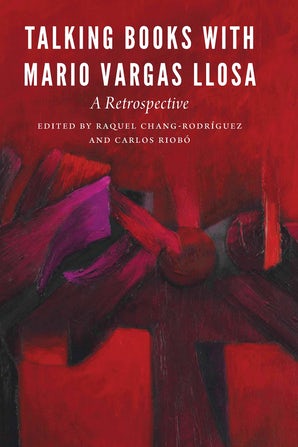
Talking Books with Mario Vargas Llosa : A Retrospective Edited by Raquel Chang-Rodríguez and Carlos Riobó (Series: New Hispanisms)
The essays included in Talking Books with Mario Vargas Llosa celebrate Mario Vargas Llosa’s visits to the City College of New York, the creation of the Cátedra Vargas Llosa in his honor, and the interests of the Peruvian author in reading and books. This volume contains previously unpublished material by Vargas Llosa himself, as well as by novelists and literary critics associated with the Cátedra.
This collection offers readers an opportunity to learn about Vargas Llosa’s body of work through multiple perspectives: his own and those of eminent fiction writers and important literary critics. The book offers significant analysis and rich conversation that bring to life many of the Nobel Laureate’s characters and provide insights into his writing process and imagination. As the last surviving member of the original group of writers of the Latin American Boom—which included Gabriel García Márquez, Carlos Fuentes, and Julio Cortázar—Vargas Llosa endures as a literary icon because his fiction has remained fresh and innovative. His prolific works span many different themes and subgenres.
A combination of literary analyses and anecdotal contributions in this volume reveal the little-known human and intellectual dimensions of Vargas Llosa the writer and Vargas Llosa the man.
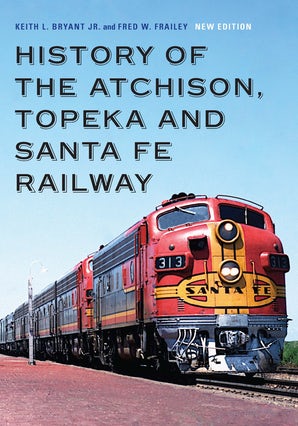
History of the Atchison, Topeka and Santa Fe Railway Keith L. Bryant Jr. and Fred W. Frailey
Cyrus K. Holliday envisioned a railroad that would run from Kansas to the Pacific, increasing the commerce and prosperity of the nation. With farsighted investors and shrewd management, the Atchison, Topeka and Santa Fe Railway grew from Holliday’s idea into a model of the modern, rapid, and efficient railroad. There were many growing pains early on, including rustlers, thieves, and desperadoes as well as the nineteenth century’s economic and climatic hardships. The railroad eventually extended from Chicago to San Francisco, with substantial holdings in oil fields, timber land, uranium mines, pipelines, and real estate.
This is the first comprehensive history of the iconic Atchison, Topeka and Santa Fe Railway, from its birth in 1859 to its termination in 1996. This volume discusses the construction and operation of the railway, the strategies of its leaders, the evolution of its locomotive fleet, and its famed passenger service with partner Fred Harvey. The vast changes within the nation’s railway system led to a merger with the Burlington Northern and the creation of the BNSF Railway.
An iconic railroad, the Santa Fe at its peak operated thirteen thousand miles of routes and served the southwestern region of the nation with the corporate slogan “Santa Fe All the Way.” This new edition covers almost twenty-five more years of history, including the merger of the Santa Fe and Burlington Northern railroads and new material on labor, minorities, and women on the carrier along with new and updated maps and photographs.
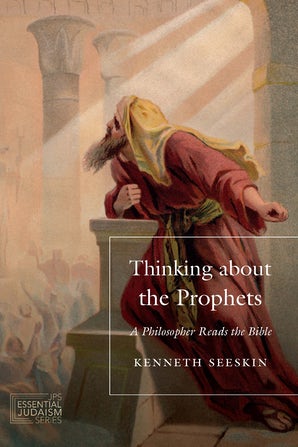
Thinking About the Prophets : A Philosopher Reads the Bible Kenneth Seeskin (Series: JPS Essential Judaism)
Rethinking the great literary prophets whose ministry ran from the eighth to the sixth centuries BCE—Amos, Hosea, First Isaiah, Jeremiah, Ezekiel, Second Isaiah, and Job—Thinking about the Prophets examines their often-shocking teachings in light of their times, their influence on later Western and Jewish thinkers, and their enduring lessons for all of us. As a noted scholar of Jewish philosophy, Kenneth Seeskin teases out philosophical, ethical, and theological questions in the writings, such as the nature of moral reasoning, the divine persona, divine providence, the suffering of the innocent, the power of repentance, and what it means to believe in a monotheistic conception of God.
Seeskin demonstrates that great ideas are not limited by time or place, but rather once put forth, take on a life of their own. Thus he interweaves the medieval and modern philosophers Maimonides, Kant, Cohen, Buber, Levinas, Heschel, and Soloveitchik, all of whom read the prophets and had important things to say as a result. We come to see the prophets perhaps in equal measure as divinely authorized whistle-blowers and profound thinkers of the human condition.
Readers of all levels will find this volume an accessible and provoking introduction to the enduring significance of biblical prophecy.
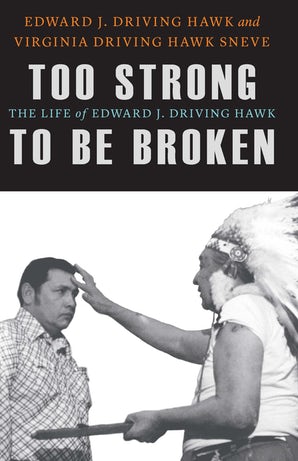
Too Strong To Be Broken : The Life of Edward J. Driving Hawk Edward J. Driving Hawk and Virginia Driving Hawk Sneve (Series: American Indian Lives)
Too Strong to Be Broken explores the dynamic life of Edward J. Driving Hawk, a Vietnam and Korean War veteran, chairman of the Rosebud Sioux Tribe, former president of the National Congress of American Indians, husband, father, recovered alcoholic, and convicted felon.
Driving Hawk’s story begins with his childhood on the rural plains of South Dakota, then follows him as he travels back and forth to Asia for two wars and journeys across the Midwest and Southwest. In his positions of leadership back in the United States, Driving Hawk acted in the best interest of his community, even when sparring with South Dakota governor Bill Janklow and the FBI.
After retiring from public service, he started a construction business and helped create the United States Reservation Bank and Trust. Unfortunately, a key participant in the bank embezzled millions and fled, leaving Driving Hawk to take the blame. Rather than plead guilty to a crime he did not commit, the seventy-four-year-old grandfather went to prison for a year and a day, even as he suffered the debilitating effects of Agent Orange.
Driving Hawk fully believes that the spirits of his departed ancestors watched out for him during his twenty-year career in the U.S. Air Force, including his exposure to Agent Orange, and throughout his life as he survived surgeries, strokes, a tornado, a plane crash, and alcoholism. With the help of his sister, Virginia Driving Hawk Sneve, Driving Hawk recounts his life’s story alongside his wife, Carmen, and their five children.

Wildlife of Nebraska : A Natural History Paul A. Johnsgard
In Wildlife of Nebraska: A Natural History, Paul A. Johnsgard surveys the variety and biology of more than six hundred Nebraska species. Narrative accounts describe the ecology and biology of the state’s birds, its mammals, and its reptiles and amphibians, summarizing the abundance, distributions, and habitats of this wildlife. To provide an introduction to the state’s major ecosystems, climate, and topography, Johnsgard examines major public-access natural areas, including national monuments, wildlife refuges and grasslands, state parks and wildlife management areas, and nature preserves.
Including more than thirty-five line drawings by the author along with physiographic, ecological, and historical maps, Wildlife of Nebraska is an essential guide to the wildlife of the Cornhusker State.
**
All book covers and synopses courtesy of University of Nebraska Press (https://www.nebraskapress.unl.edu/)

